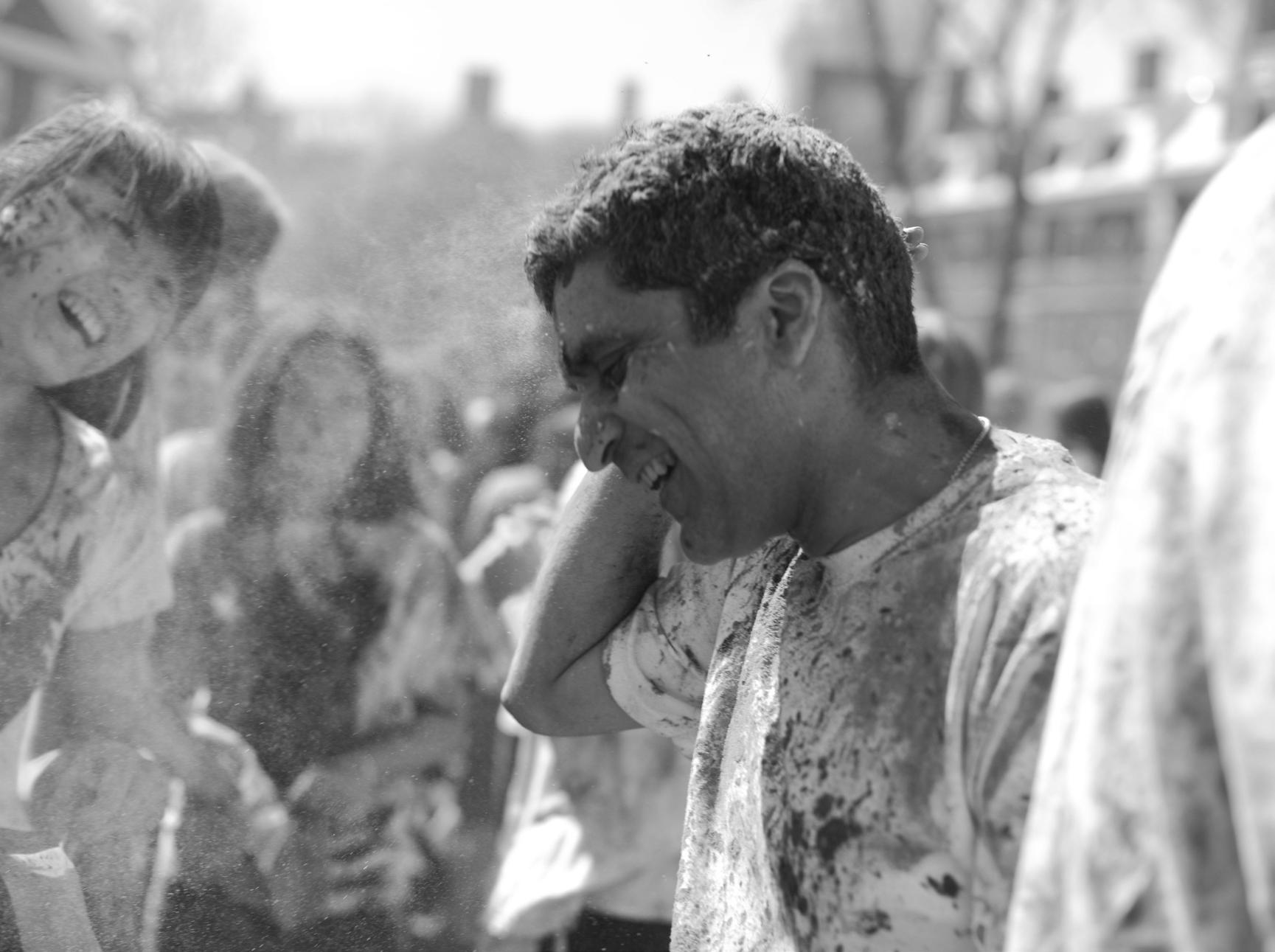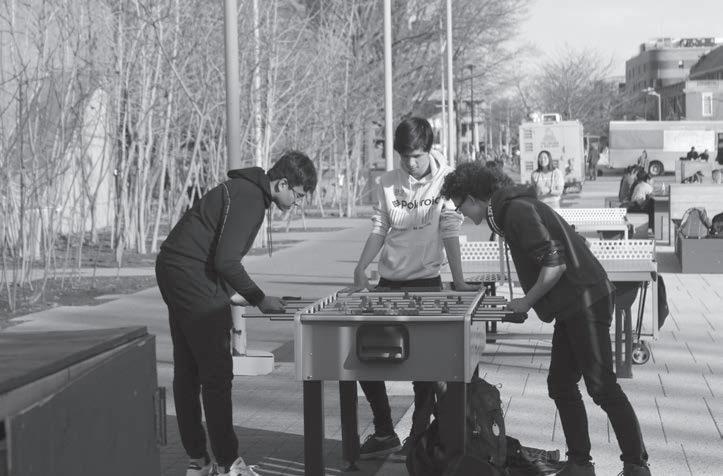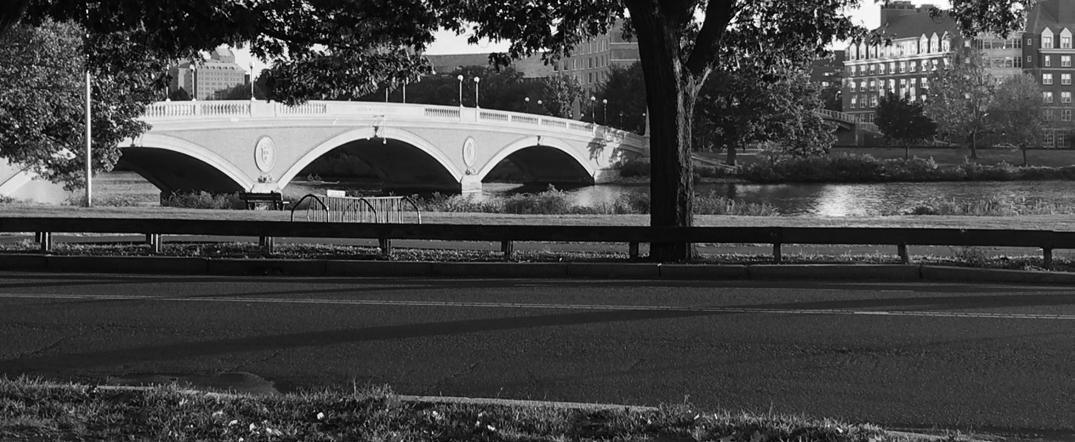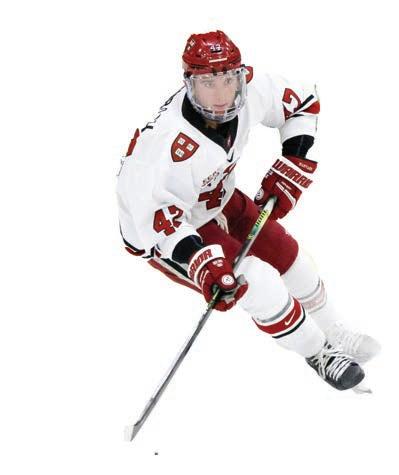
19 minute read
News
#MeToo Founder Tarana Burke Reflects on Work
By sixiao yu and Raquel C. Ur ibe Crimson Staff Writers
At the Institute of Politics Wednesday, Tarana Burke, the founder of the #MeToo move ment, discussed the importance of intersectionality in her work and how she thinks the move ment should continue after recent verdicts against Hollywood executive Harvey Weinstein.
At the beginning of the event, Burke received a stand ing ovation after being awarded the Harvard Kennedy School’s Alan Gleitsman Citizen Activ ist Award.
Ambassador Wendy R. Sher man, Kennedy School professor and director of the Center for Public Leadership, moder ated both the conversation with Burke and a discussion with au dience members.
During the discussion, Burke reflected on Weinstein, whose alleged sexual misconduct fu eled the #MeToo movement in 2017. On Monday, a jury charged Weinstein — a movie executive whom more than 100 women have accused of sexual harass ment and abuse — with a criminal sexual act in the first degree and third degree rape.
He was acquitted of first de gree rape and two counts of predatory sexual assault.
“There’s a lot of excitement in the air right now — some re newed energy after this Weinstein verdict, which I’m going to comment on, because we have a lot of work to do,” Burke said af ter receiving the award. “But I am really grateful for where we are.”
Burke founded the #MeToo movement in 2006, while work ing at Just Be Inc., her nonprofit that focuses on supporting young women of color. She coined the phrase “me too” as a statement supporting people who have experienced sexual assault.
In 2017, the New York Times broke a story documenting de cades of allegations of sexual harassment against Weinstein. Soon after the story was pub lished, actress Alyssa J. Milano began using the #MeToo hashtag. Hundreds of people began sharing their own stories of sexual misconduct using the hashtag.
That fall, Burke’s movement — over a decade old — sudden ly emerged in the spotlight. At the discussion, Burke acknowl edged that the Weinstein verdict “is not an indictment of #MeToo.” She said the move ment “is about catharsis” and “healing.”
“Justice looks different for everyone and survivors don’t think punitively,” Burke said. “We want healing.”
Burke also discussed dif ferences between society’s response to women of color and white women who experience sexual assault. “Whether — white men, black men, black women — we have been socialized to respond to the vulnerability of white women,” Burke said. “And be cause of that, we put aside so many things, and we push for ward.”
In the question portion of the forum, Lovern J. Gordon — founder of Love Life Now, a nonprofit to support peo ple who have experienced domestic abuse — asked how to bring more people, including those from underrepresented backgrounds, into the #MeToo movement.
Burke stressed that pro viding resources to marginalized groups who may have felt disconnected from the main stream #MeToo movement.
“Our work, our programs — and we’ve taken two years to re ally work hard to build out programs specifically so that we are hitting marginalized groups first, and so that we get to the people who usually don’t get the resources first,” Burke said.
Burke also encouraged stu dents to get involved in procuring more resources at higher education institutions such as Harvard for people who faced sexual misconduct.
“When places like Harvard have courage they maybe hav en’t had in the past, others follow,” Burke said. “You have the power now. You have the power in your pocketbook because you are paying tuition. Sit down and Tarana Burke, founder of the #MeToo movement, speaks on Wednesday at the Institute of Politics. Ryan n. gaja awala—C imson photog aphe
examine what forms of power you have, and use that power to push back.”
Maria Keselj ’23 said in an interview after the forum that it was “really insightful” to lis ten to the “empathy-based, survivor-based” perspective that Burke presented.
“We all have this urge to go and get justice,” she said. “But really, when you look back, is that what people really want? I find that it’s this really aggres sive — and you can call it a toxic masculine — way to look at it.”
sixiao.yu@thecrimson.com
HKS Dean Supports Student Activists
By Sixiao yu Crimson Staff Writer
Amid continued criticism over the lack of faculty and student diversity at the school, Harvard Kennedy School of Government Dean Douglas W. Elmendorf said he hopes to engage with student activism in an inter view Wednesday.
“Our students are passion ate about making the world better. That’s why we admit them to the Kennedy School — it’s because of that passion,” he said. “Universities tend to move more slowly than students want them to move, and I remember that very clearly from when I was a graduate student here at Harvard.”
Elmendorf stressed the role free speech plays in HKS’s pro gramming, pointing to the John F. Kennedy, Jr. forum as a space for discussion between audi ence members and prominent speakers.
“Every event at the Kennedy School, with an outside speaker, there are questions and answers that come from the members of the audience and sometimes the questions are friendlier and sometimes the questions are more critical. “
Kennedy School students and administrators have start ed their own discussions regarding diversity at the school in recent years.
Student groups such as the HKS Equity Coalition have ad vocated for the school to increase diversity in its student body, faculty, and curriculum. Earlier this month, the coalition sent an email — signed by multi ple affinity groups and 375 HKS affiliates — to Elmendorf de manding that the school “commit to creating a culture and environment built on the principles of anti-racism.”
The letter called on HKS to implement mandatory diversi ty training for all HKS affiliates in the spring, host a required course across all degrees on the “history of race and inequality” for the upcoming fall semester, and hire faculty of color who “critically study the intersec tionality of race, gender, class, and power.”
In his response, Elmendorf wrote that the Kennedy School will partner with advocacy group Community Change, Inc. to develop anti-racism work shops this spring.
He also wrote that while he and his colleagues are “com mitted” to enhancing a diverse education at HKS, they are not yet convinced that “a required, standalone course is the best approach.”
Elmendorf added that the school hired five faculty mem bers over the past three years such as Marcella M. Aslan ’99 and Desmond W. Ang “who work on aspects of ‘difference.’” In the interview, Elmen dorf, referencing the letter and his response, spoke about how the school has designed their search for new faculty to “re duce biases” and “cast a very wide net.”
“We have been able to hire outstanding people, because of that,” he added.
Elmendorf said that Sandra S. Smith, a current professor of sociology at the University of California, Berkeley, will join the HKS faculty. Smith studies issues of urban poverty and ra cial inequality.
“She is one, now, of half a dozen family members we’ve hired in the last few years, who focus on race and gender identi ty issues,” Elmendorf said.
Elmendorf said the school also hopes to increase the amount of financial aid offered to its students.
“We’re fortunate to have a lot of friends at the Kenne dy School who provide financial aid who are not alumni of the school, but who believe pas sionately, like our students, in the importance of public ser vice,” Elmendorf said. “And we hope to continue to increase the amount of financial aid we can offer.”
sixiao.yu@thecrimson.com
amicus From Page 1
DOJ Files Pro-SFFA Appeal Brief
the emails, depositions, internal studies, data analysis and testi mony that SFFA presented to the district court to prove that Harvard’s admissions policies are discriminatory.”
The Justice Department’s brief comes as the latest part of litigation that has been pend ing against Harvard for several years. SFFA initially filed its lawsuit against Harvard in No vember 2014. Last October, District court Judge Allison D. Burroughs ruled in Harvard’s favor and found that the College does not discriminate against Asian American applicants.
Eonomists and several legal organizations also submitted amicus briefs supporting SFFA and opposing the district court ruling. Those groups include Mountain States Legal Foun dation, Judicial Watch, and the National Association of Schol ars, among others. The Asian American Coalition for Educa tion and the Asian American Legal Foundation also submitted a brief, which lists the names of nearly 300 Asian American or ganizations as supporters.
Harvard spokesperson Ra chael Dane declined to comment on the amicus briefs.
The brief marks the second time the Justice Department has previously supported SFFA in its lawsuit against Harvard. Separately, the Department led its own investigation into alleged discrimination in Har vard admissions, which was confirmed as ongoing in De cember 2019.
Harvard is scheduled to sub mit its brief in the case by May 14.
benjamin.fu@thecrimson.com dohyun.kim@thecrimson.com
The sights and sounds of Harvard.
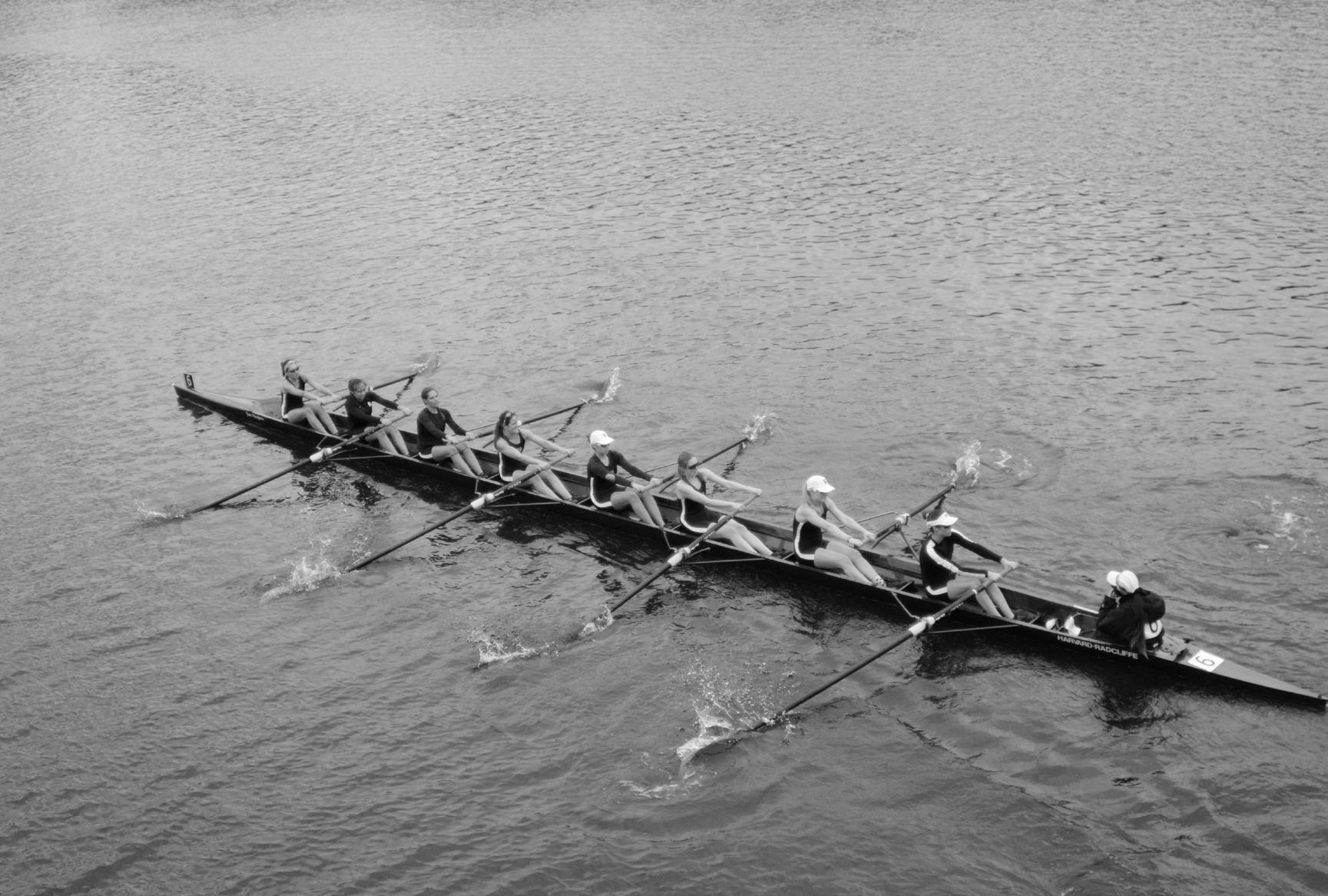
The Crimson @crimson_photo
Adams’s Renewal Plan Presented
By cami e g. ca dera and amanda y. su Crimson Staff Writers
Seventy-nine percent of student beds in Adams House will be in singles and 77 percent will be in suite-style living after the House’s renovations are com plete, architect Nathaniel F. R. Rogers ’05 said in a presentation to Adams affiliates Wednesday evening.
The renovations will also in crease the capacity of Adams dining hall by 35 to 50 seats and add “new meeting and break out spaces,” according to the presentation, which was put on by Rogers and two other archi tects, Elizabeth Leber and Aaron M. Lamport ’90.
Adams House is currently in the first year of a four-year ren ovation plan — the longest project the College has taken on thus far as part of its House Re newal program.
At the presentation, students raised questions about murals that generations of Adams res idents have painted on the walls of tunnels that run under the House.
Due to deterioration and groundwater damage, Rogers said they will not be able to save “many or any” of the original murals. However, he said they plan to create a digital photo graphic archive so students can “visit the tunnels virtually.”
“There will be an incredible amount of blank canvas to cre ate new murals for the next 10, 20, 30, 40 years,” Rogers said. “This is really about another chapter in the Adams House story.”
The renovation also aims to unify the three buildings that comprise Adams House. Orig Members of Adams House met on Wednesday evening to hear and discuss updates on Adams’s current construction. Owen a. berger—Crims n ph t grapher
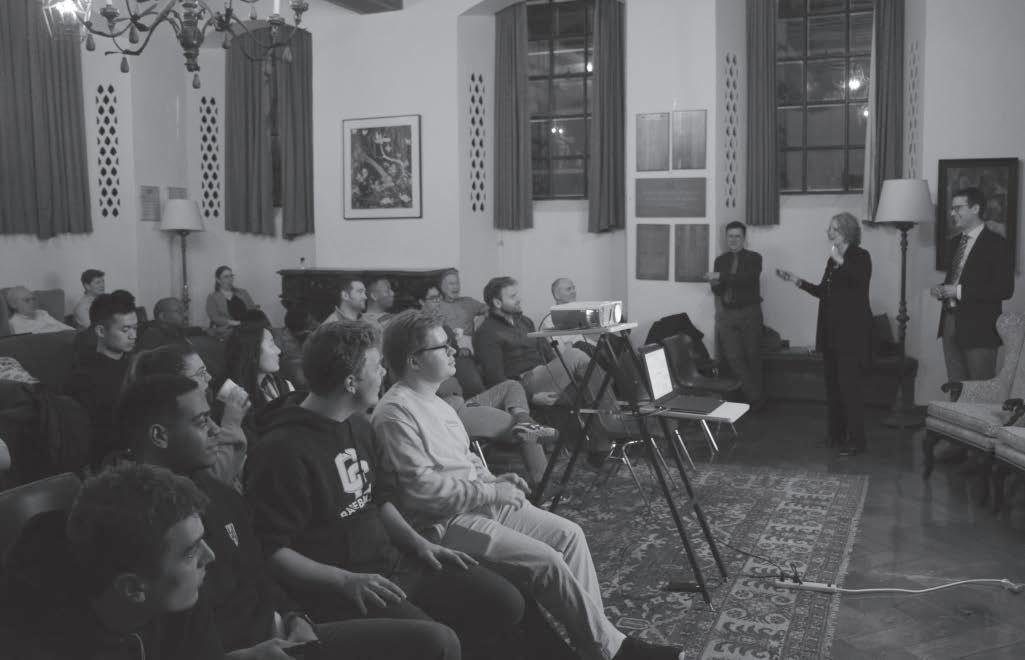
inally, separate developers built the buildings as private off-campus housing and never intended for them to “relate” to each other, per Rogers.
The project will create a “mid-block access” that extends from Russell Hall, to Claverly Hall, to Westmorley Hall. The mid-block access would make the outdoor sidewalk entranc es to buildings the same level as the floor inside of them, allow ing wheelchair users to enter more easily.
“This really serves two pur poses,” Rogers said. “One is to really make Adams feel more like one single community, even though you’re spread across three different city blocks. The second is it actually achieves a lot of accessibility needs.”
The renovation project will also make the Adams Pool The ater and the House’s courtyard more accessible.
Lamport also said that Ad ams House will be the first house to boast direct air ventila tion into each individual room. “It’s not air conditioning — it can’t claim to be that — but that air has been dehumidified, it’s going to be certainly cooler on a hot day than what’s out on the street, and it means there’s less of a need to open up a window,” he said.
Other amenities in the reno vated house will include small offices designed for phone calls and a new common space called “The Loft.” Adams is the sixth house — after Leverett, Quincy, Dun ster, Winthrop, and Lowell — to be renovated.
Claverly Hall and Senior House — which are under con struction during this academic year — will open in August 2020. Renovations on Randolph Hall and Apthorp House are set to begin this June and finish by January 2022, though students will not move into those build ings until the next academic year. Renovations on Russell Hall, Library Commons, and Westmorly Hall will start in June 2022 and end in August 2024.
camille.caldera@thecrimson.com amanda.su@thecrimson.com
Lowe From Page 1 Tutors Soon to Depart Lowell
March 26, according to College spokesperson Rachael Dane.
Charlie S. Tyson, a depart ing tutor and Chair of Fellowships for Lowell House, said he believes the House will remain “warm” and “robust,” despite the departure of many sea soned tutors.
He also said the turnover in tutors is comparable with the turnover among undergrad uates, when each sophomore class replaces the House’s grad uating seniors.
“It’s always sad when you know one of your friends moves away, but the same could be said of the entire flock of se niors who graduate each year,” Tyson said.
Hannah R. Shaffer, who will assume the position of Chair of Fellowships following Ty son’s departure, said she looks forward to welcoming the new class of tutors.
“I think new tutors often have a lot of spirit and drive, and they want to prove them selves,” Schaffer said.
“I think mixing it up some times can be good. It kind of depends on how we all jive next year. I’m optimistic.”
Shaffer also said she believes some Lowell tutors may have stuck around for an extra year to assist with the recent facul ty dean transition. In August 2019, Laibson and Co-Facul ty Dean Nina Zipser replaced former Faculty Deans Diana L. Eck and Dorothy A. Austin, who had served in their posi tions for two decades.
Simmons said he believes the student-centric focus of the tutor hiring process lends itself to finding capable tutors to fill the vacancies.
Charlie S. Tyson Lowell House Tutor
“The House administra tion are trying to solicit as much student input as possible, which is important with hiring new tutors, because we’re the ones they will interact with,” he said.
“With so many tutors leav ing — especially so many good tutors leaving — there will be many large shoes to fill. But I trust David and Nina to hire good people.”
sydnie.cobb@thecrimson.com declan.knieriem@thecrimson.com
The T closes. We don’t.
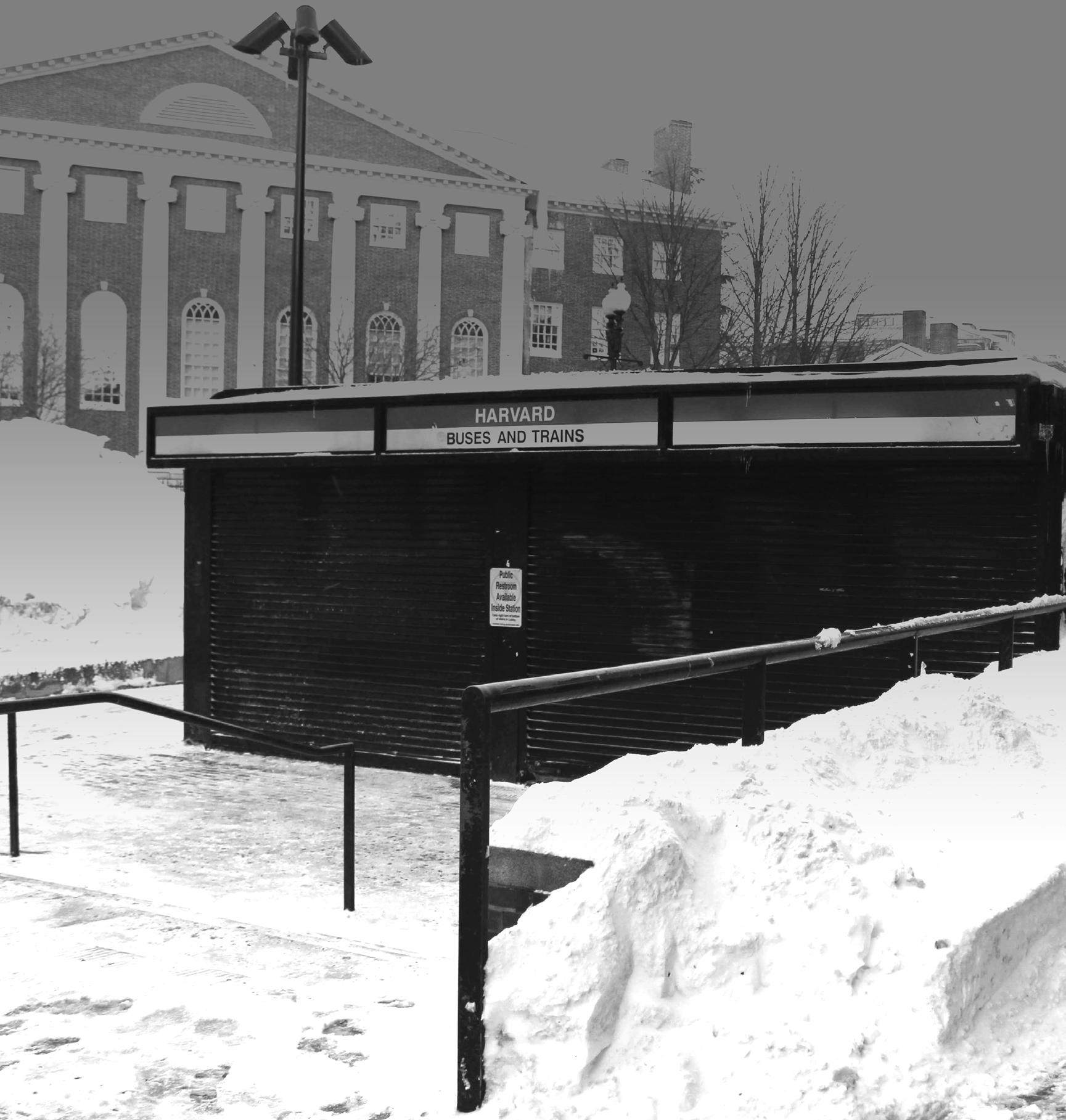
Breaking news, 24/7.
The Crimson thecrimson.com
Linguist Discusses Origins of Language at Book Talk
Daniel L. Everett, author of the new book How Language Began: The Story of Humanity’s Greatest Invention, speaks at the Cabot Science Library. zadoc i.n. gee—Crimson photographer
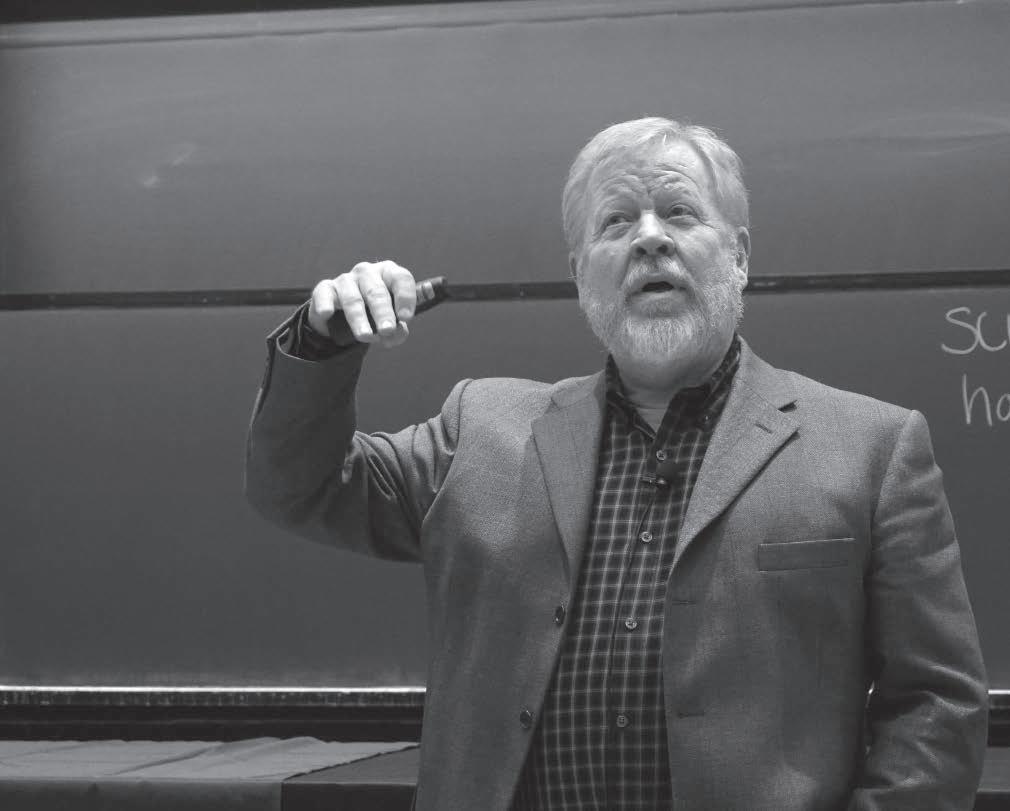
By natalie l. kahn Contributing Writer
Daniel L. Everett, a linguist who also serves as the Dean of Arts and Sciences at Bent ley University, introduced his newest book and discussed the origins of language to a crowd of more than 200 in the Science Center Wednesday evening.
The conversation on top ics covered in Everett’s book, “How Language Began: The Story of Humanity’s Greatest Invention,” is part of a series of science-related book talks co ordinated by the Harvard Division of Science, Cabot Science Library, and the Harvard Bookstore.
The premise of his new work is that language predates Homo sapiens, tracing back to Homo erectus.
Everett hypothesized that as long as the Homo genus has had the ability to create com plex tools, communication has been necessary.
“[Tools] have symbolic and social components. They go be yond the functionally necessary, they go into style that represents one tradition over another,” he said.
He also said tools are evi dence of culture, which in turn suggests the presence of lan guage.
“You can’t have a language unless you have a culture, and you can’t have a culture unless you have a language,” Everett said.
Everett subscribes to the gradual theory of linguis tics, the idea that spoken and written language developed over hundreds of thousands of years, rather than the salta tionist one, which argues that the emergence of language oc curred more suddenly.
“The evolution of the plat forms for language and symbols took evolutionary time and are not limited to Homo sapiens,” he said. “You don’t just get a creature that one day stands up and starts talking.”
Simge Topaloglu, a graduate student in psychology who at tended the talk, said this differs from her viewpoint of how lan guages develop.
“It’s certainly a different approach to have language emerge — claiming that it emerged gradually over a mil lion years or more as opposed to being attributed to a single mutation that possibly hap pened 50 to 60,000 years ago,” she said.
Even though the language of Homo erectus is less complex than the language of Homo sa piens, that does not necessarily make it less legitimate, Everett said.
He cited the lifestyle of Homo erectus to demonstrate that its language contained only what it needed to survive and to express itself, while pointing out that even some current languages do not have numbers and others do not have colors.
“How much grammar do you need to build a boat?” Ev erett said.
He added that the “sim ple” nature of the language of Homo erectus also is not nec essarily indicative of its intelligence as a genus.
“You could say maybe [Homo erectus] had the intelli gence of an eight-year old or 10- year old sapiens child,” he said. “No way to really know that, but let’s say they did — eightyear olds can talk a lot.”
Scalise Speaks on Academic Support Scali e From Page 1
experience is a unique college experience in athletics, because you can compete at the highest level in most of our sports,” he said. “But you get a chance to have an academic experience that’s second to none. And you have to decide what that’s go ing to be. It’s different than other places.”
“The schools that do that tend to do that so that their kids stay eligible,” he said.
According to the Harvard Athletics website, Ivy League “athletes should be treated as other students, receiving noth ing more nor less.”
And yet, other Ivy League schools provide academic support exclusively for ath letes. The University of Pennsylvania, Columbia University, Cornell University, and Brown University each boast student-athlete tutoring pro grams that provide individualized attention to athletes.
In doing so, Scalise said Harvard’s peer institutions are succumbing to national trends in collegiate sports. “I’m starting to see these little — this creepage of the big time approach into other Ivy League schools,” he said. “And you have to say, at what cost are you willing to have this athlet ic success?”
Still, Student-Athlete Advi sory Committee Co-President Madison J.H. Earle ’20 said she believes Harvard athletes would benefit from additional academic support.
Earle said she does not want athletes to gain access to re sources not available to their non-athlete peers.
Instead, she said she would prefer Harvard to tailor exist ing academic resources to align with athletes’ schedules.
Earle said the time athletes devote to their sport — which she estimated at roughly 30 hours per week — precludes them from taking full advan tage of academic resources at Harvard that are ostensibly available to all undergradu ates.
She said professors’ office hours and sessions at the Aca demic Resource Center and the Harvard College Writing Cen ter tend to coincide with athletes’ practices and competitions.
In the past, Harvard has of fered resources aimed specifically at student-athletes in non-academic areas.
In the fall of 2018, Harvard Athletics and Harvard Uni versity Health Services’ Counseling and Mental Health Services co-created a program to support student-athlete well ness.
Scalise noted in an email that the program does not dole out specialized resources to athletes, but instead extends the hours of previously exist ing resources to accommodate athletes.
Earle said that she hopes Harvard will foster an envi ronment where athletes can succeed in both athletic and ac ademic pursuits.
“You want to take pride in both and you don’t want to ex cel in one and not in the other,” she said. “To excel in both you have to either make deci sions [or] make sacrifices, and I think that with help it would make those decisions and sac rifices a lot easier.”
She added that she believes that the practice of offering ad ditional academic resources to athletes is an equitable one.
“I don’t think it is giving athletes any special treatment. I think it’s just like leveling the playing field,” she said.
Asked about athlete con cerns regarding academic support, Scalise cited both faculty fellows assigned to each team and College programs more broadly.
“The College offers a mul titude of Academic Support to our student-athletes outside of practice and game hours via the Advising Programs Office, the Harvard College Writing Center, and the Academic Re source Center,” he said. “All student-athletes are encour aged to make use of those hours if they feel they need support.”
ema.schumer@thecrimson.com
tock From Page 1
HMC Bought Uber, Biopharma Stocks
company Adobe Systems and 640,000 shares of the biophar maceutical company Aduro Biotech.
Stephen T. Isaacs, the CEO of Aduro Biotech, said Ger ald L. Chan — a major donor to the University — gifted Har vard around 7 million shares in the company. Isaacs estimated that Harvard received the gift around “a year and a half or two years ago.”
Chan, a member of Adu ro Biotech’s board of directors from 2014 to 2018, did not re spond to a request for comment Wednesday night.
Isaacs said that Harvard has been selling the shares gradual ly since Chan gifted them.
“We appreciate that they didn’t sell it all at once,” Isaacs said.
“I think most academic in stitutions have a policy of, when they get shares, they sell them and take the cash and do what ever they’re going to do. But this was a large gift — I think it was seven million shares or so — and so Harvard’s been titrating it out over time.”
Stephen T. Isaacs CEO of Abduro Biotech
Isaacs said he was happy to hear that Harvard had sold the last of its shares in Aduro Bio tech.
“I am glad the selling is done. In biotech we never like to see somebody sell large blocks of shares. It’s challenging,” he said.
“We wish Harvard well .with the proceeds, using it for what ever they use it for.”
camille.caldera@thecrimson.com ellen.burstein@thecrimson.com
